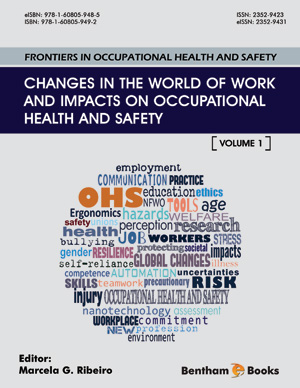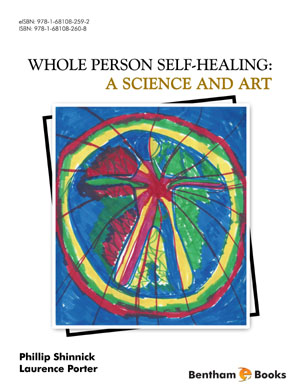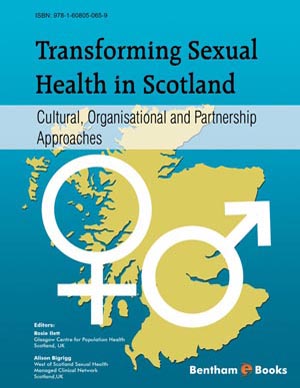The Ethic of Care: Our Moral Compass
Page: 1-38 (38)
Author: Kathleen Stephany
DOI: 10.2174/9789811439636120010006
PDF Price: $15
Abstract
Chapter One forms the foundation for everything that follows. The ethic of care, or the moral imperative to act justly, is presented as a moral compass to guide nurses when making ethical choices. Nurses are inspired to adopt the ethic of care into their practice and into their everyday lives as a lived virtue. Ethics is defined. A brief overview of the philosophical ethical theories of utilitarianism and deontology are presented followed by an explanation of the origins of the ethic of care. A connection is drawn between the ethic of care and the theoretical premises of feminism, humanism and phenomenology because they all pay attention to the contextual features of people’s lives. The ethic of justice is compared with the ethic of care. A supported argument is made that the ethic of care is still valid for today’s nurses. Watson’s caritas dimensions of healing practice are presented. It was revealed that Florence Nightingale was a strong proponent of virtue ethics, which laid the foundation for the ethic of care. Special attention is given to specific multifaceted concepts associated with care as demonstrated by three theorists: Mayerhoff, Perlman & Stephany. The Chapter ends with a Case in Point where a student nurse is assigned the challenging task of caring for a client diagnosed with a catatonic type of schizophrenia.
Integrating Sound Moral Principles into Practice
Page: 39-56 (18)
Author: Kathleen Stephany
DOI: 10.2174/9789811439636120010007
PDF Price: $15
Abstract
Moral principles are a set of ethical values that are used to guide decision making in practice. In Chapter Two an important connection between the ethic of care, nursing practice and key moral principles is made evident. Integrity consists of integrating honest ways consistently into one’s everyday actions and is the moral principle that guarantees all other values. Veracity, which is the duty to tell the truth, and fidelity, which is about being loyal, are both related to integrity. Nurses are expected to view all people as worthy of dignity. They are cautioned to avoid blaming the victim because it holds people burdened by social conditions as accountable for their own situations. Beneficence is the obligation to do what will benefit the client and non-maleficence is the duty to prevent harm. However, sometimes medical interventions with known associated risks are utilized prior to considering less harmful options. Autonomy is having the freedom to make choices and nurses are expected to do their best to ensure that client autonomy is honoured as much as possible. Nurses are encouraged to be morally courageous which consists of performing the ethical right action even in the face of opposition. The seven key attributes of a morally courageous nurse are identified. Although impediments to moral courage do exist, nurses are inspired to develop strategies to overcome them. The Case in Point at the end of the Chapter is particularly challenging. A nurse is expected to practice non-maleficence while taking care of a client who is accused of a brutal crime.
The CNA Code of Ethics Part I: Integrating Nursing Ethical Values & Responsibilities into Care
Page: 57-84 (28)
Author: Kathleen Stephany
DOI: 10.2174/9789811439636120010008
PDF Price: $15
Abstract
Chapter Three begins with exploring the role of Canadian law because nurses who have a working knowledge of the Canadian legal system are better equipped to deal with legal issues that may arise during their practice. A brief overview of The Canadian Constitution and The Charter of Rights and Freedoms is also undertaken for similar reasons. Key aspects of the role of the Canadian Nurses Association (CNA) are presented followed by a discussion of the purpose and foundation of the CNA Code of Ethics. A connection is drawn between themes from the CNA Code of Ethics and the ethic of care. Nurses are made aware that the ethical values and responsibilities as laid out in Part I of the CNA Code of Ethics are not discretionary and must be followed by all practicing nurses. Each of the seven CNA Code of Ethics values are then discussed in terms of how they play out in actual practice and narratives are used to emphasize important points. Some topics that directly relate to Part I of the CNA Code of Ethics include: safety and nursing research; what to do if a nurse suspects that a health professional is practicing unsafely or unethically; key elements of informed consent; and the role of the nurse practitioner and registered nurse in medical assistance in dying (MAID). The Chapter ends with a Case in Point where a nurse deliberately covers up a mistake that costs a client their life.
Values Clarification: Identifying what Matters to Nurses and Clients & Respecting the Differences
Page: 85-100 (16)
Author: Kathleen Stephany
DOI: 10.2174/9789811439636120010009
PDF Price: $15
Abstract
The purpose of Chapter four is to inform nurses to learn how to respect differences in opinions through the process of values clarification. When a nurse is unaware of their values, especially when it comes to precarious subject matter, they may inadvertently impose their point of view onto others. From an ethical perspective, this type of response can be extremely problematic. It is recommended that nurses go through the process of uncovering their hidden values by increasing self-awareness. Nurses are also encouraged to use empathetic listening to respect client beliefs that differ from their own. Moral agency, moral residue and moral disengagement are explained. Unresolved moral conflicts can sometimes lead to moral residue that causes a nurse to become morally disengaged. Nurses are advised to get help before this occurs. Self-care strategies are highly recommended. In the Case in Point a client’s right to choose results in moral residue for the nurse.
Utilizing Tools for Ethical Decision Making
Page: 101-112 (12)
Author: Kathleen Stephany
DOI: 10.2174/9789811439636120010010
PDF Price: $15
Abstract
Chapter Five begins with an overview of the association and differences between ethical problems, ethical dilemmas, moral distress, moral agency and moral residue. Two specific tools for nurses to use when confronted with moral issues in practice are presented: The Mosaic Model for Ethical Decisions by Stephany (2012) and A Framework for Ethical Decision Making by Oberle and Bouchal (2009). An open discussion of the strengths of each strategy is presented. The Mosaic Model differs from other models in that it emphasizes care and caring relationships; keeps the person in the center; is non-linear and is applicable in many settings. The Framework is recommended by the CNA (2017). Tt focuses on the client’s best interests; it encourages reflection; offers items to consider in practice; and is very applicable in a variety of ethical situations. The aforementioned model and framework are each presented in a series of five steps. In the Case in Point a client’s decision conflicts with some members of the health care team. Nurses are encouraged to use the model or framework presented in this Chapter to sort through the ethical issues in this case.
Professionalism & Accountability: Inspiring Nurses to Act Responsibly
Page: 113-132 (20)
Author: Kathleen Stephany
DOI: 10.2174/9789811439636120010011
PDF Price: $15
Abstract
Professional behaviours and accountability are the key focus of Chapter Six. Some of the professional nursing standards that were discussed include: professional responsibility & accountability, knowledge-based practice, competent application of knowledge, a code of ethics, provision of services in the public interest and selfregulation. Strategies to ensure that the practice of nursing be lived as a call to care were included in the discussion of professionalism. The discussion then focusses more definitively on accountability and begins by drawing a connection between accountability, the ethic of care and CNA Code of Ethics key ethical responsibilities. A crucial order of priorities in nursing accountability is clearly articulated and it is asserted that a client’s welfare supersedes all other responsibilities. Explicit tools are suggested for nurses to follow when they encounter an ethical conflict with institutional policy. At the end of the Chapter, two Cases in Point are presented. One involves a client record being intentionally altered. The other features an alarming situation where a nurse is ordered to withhold crucial information from clients who are at risk of harm.
Advocacy: The Heart of Nursing
Page: 133-155 (23)
Author: Kathleen Stephany
DOI: 10.2174/9789811439636120010012
PDF Price: $15
Abstract
Nursing Advocacy entails acting on behalf of others and Chapter Seven promotes advocacy as the driving force of nursing. Advocacy can occur in the form of being a voice for an individual or by supporting a larger cause. Nurses are expected to maintain quality health care services, preserve public access to health care and ensure health equity. Whistle-blowing is presented as a more drastic form of advocacy that is only to be used as a last resort. Six specific actions are suggested for nurses to seriously consider before whistle-blowing. Nurses are not likely to advocate for a person or group of people that they have a bias toward. Cultural safety and affirmative action are recommended to end discrimination. There are some negative consequences associated with advocacy like that of being morally silenced. The Chapter ends with a Case in Point where a student nurse chooses to be the voice for the client.
In an Age of Technological Advancements: Ensuring that Caring Remains in Practice
Page: 156-170 (15)
Author: Kathleen Stephany
DOI: 10.2174/9789811439636120010013
PDF Price: $15
Abstract
Chapter Eight explores how technological advances enhance healthcare delivery but also create new challenges for nurses. Caring as technology refers to the meaning of health care delivery in relationship to technology. Many benefits of technology in health care include, expediency of care delivery, improving the working conditions of nurses, safer learning opportunities for student nurses, and decreased overall costs for health care. There are also some draw backs such as, a decrease in direct communication, a negative impact on relational practice, an increased risk of privacy violations and the loss of nursing jobs. It was pointed out that, in modern health practices the nurturing aspects of caring for the ill or aged is increasingly viewed by some institutional bodies as less important than other more mechanistic aspects of service. Modern advances of science have also somewhat blurred the boundaries of when life begins and when it ends. Nursing the dying person can be difficult for nurses. No matter how many future changes occur the challenge to the profession of nursing is not to lose the capacity to care. Mindfulness was recommended as a tool to help nurses to connect with their clients in a caring way. In the Case in Point a distraught family member shares her story of how it felt to be left in the dark about the imminent death of her loved one.
Embracing Diversity: Toward a Morally Inclusive Practice
Page: 171-196 (26)
Author: Kathleen Stephany
DOI: 10.2174/9789811439636120010014
PDF Price: $15
Abstract
The goal of Chapter nine is to assist nurses to engage in a morally inclusive practice. A morally inclusive practice celebrates what people have in common as well as their differences. Diversity reflects variations in belief systems and ways of living and permeates everything that we do. Nurses are advised to diligently avoid stereotyping, which is expecting all people from a particular group to respond in a certain way based on perceived ideas. Systemic racism reinforces unfair inequalities among ethnic or racial groups and is a serious problem in health care. Education is the key to changing this culture. It is pointed out how Colonialism and Canadian residential schools resulted in historical trauma to Indigenous peoples that still negatively impacts large numbers of people. The Truth & Reconciliation Commission of Canada (TRCC) (2015) made a specific recommendation that Canadian medical and nursing schools include a mandatory course covering Aboriginal health issues. Applying the principles of trauma-informed care (TIC), cultural safety and cultural humility are recommended to help nurses be empathetic. Bullying is identified as a negative but harsh reality in nursing. Witnesses of bullying are asked to intervene to end bullying behaviours. A proposed Code of Conduct to encourage inclusion in nursing is recommended. The Chapter ends with a Case in Point: The Sinclair Case: Ignored to Death.
Ethics, Gender & Sexual Orientation: Moving Beyond Tolerance to Acceptance
Page: 197-211 (15)
Author: Kathleen Stephany
DOI: 10.2174/9789811439636120010015
PDF Price: $15
Abstract
Chapter ten deals with the somewhat sensitive subject matter of ethics, gender and sexual orientation. Nurses are encouraged to move beyond tolerance and to accept and respect life choices that differ from their own. The issue of gender style and ethical decision-making is reviewed. It is pointed out that male ways of approaching moral decision-making may be different from females but not inferior to them. The reasons why Canadian nurses are still primarily women is explored. Nurses are obligated to have a working knowledge of the varying forms of sexual and gender orientation and they are not allowed to discriminate against any individual for any reason. It is pointed out that members who identify as lesbian, gay, bi-sexual, transgender, queer or questioning their sexual identity, or 2 spirit (LGBTQ2S) are often victims of both acute and chronic trauma. They are often not well understood or treated by members of the health community. Nurses are advised to become familiar with treatment guidelines in order to more effectively manage gender assessments. A strategy to foster compassion is recommended. The Chapter ends with a Case in Point: When Coming Out Seems to Cost too much.
The Role of Religion & Spirituality in Nursing: Respecting What the Client Believes
Page: 212-224 (13)
Author: Kathleen Stephany
DOI: 10.2174/9789811439636120010016
PDF Price: $15
Abstract
The aim of Chapter eleven is to encourage nurses to work with their client’s religious and spiritual values and not to discriminate when they differ from their own. The desire to believe in God or something beyond the physical is deemed universal. Theology, religion and spirituality are an integral part of the search for something more and what most religious and spiritual beliefs share is the notion that there is more to life than physical existence. The profession of nursing has a long and enduring history of a close association with spirituality and nursing has often been referred to as a mission or calling. It is argued that religious practices are still valid for present day nursing. The Canadian Nurses Association (CNA) supports this stand and recognizes parish nursing as valid. The ethic of care can be viewed as a means to spiritual connection because, like religion, spirituality values the relationship between people and all that exists in life. Nurses are also strongly encouraged to consider implementing transcultural caring guidelines for spirituality into their practice. The Chapter ends with a Case in Point: When a practicing Christian is assigned to care for an Atheist.
Ethical Nursing Leadership for the 21st Century: The Importance of Being the Change
Page: 225-241 (17)
Author: Kathleen Stephany
DOI: 10.2174/9789811439636120010017
PDF Price: $15
Abstract
Ethical leaders ensure that moral conduct is a standard expectation for people in positions of power and Chapter twelve introduces ethical leadership as the new way of leading for nurses. Many people have ingrained beliefs as to what leadership consists of. Therefore, the Chapter begins with an overview of the five most common myths of leadership. An explanation is given as to why the topic of ethical leadership has become popular in recent years. Ethical leadership has four key aims. It brings the person back into focus, it encourages organizations to invest in human potential as a valuable resource, it pursues greater social justice, and it makes protecting the environment a priority. It is argued that ethical nurse leaders are needed because the 21st Century presents unique challenges for the nursing profession. The association between ethical nursing leadership and the ethic of care is explained and nurses are inspired to take on the challenge of being agents for change. In the Case in Point a student nurse recounts a leadership strategy that empowered them.
Introduction
There is an increased use of technology and informatics, heavier workloads and constant changes in the way in which disease processes are managed. Yet, when compared with other health professionals, nurses still spend a great deal of time in direct contact with patients and clients. They stay at the bedside, listen to their stories, give comfort and advocate. The Ethic of Care: A Moral Compass for Canadian Nursing Practice is unique from other nursing ethics textbooks in several key ways. The book adds a heightened dimension to the already rich knowledge in the field of applied nursing ethics and the ethic of care. The author argues that the ethic of care, or the moral imperative to act justly, be the guiding compass for everything that nurses do. It is with passion and conviction that nurses are encouraged to embody the ethic of care as a "lived virtue." Nurses are also inspired to be the leaders of tomorrow by working toward achieving accountability and sustainability in the Canadian publicly funded health care system and by effectively addressing social inequities. At the end of each chapter the author conveys real life case studies, as derived from her experiences as a critical care nurse, psychiatric nurse clinician and former Coroner. These vignettes bring the subject to life and serve as a means for applying newly acquired ethical knowledge. The aim of this book is to inspire nurses to be as skillful, and compassionate as they can be so that they will leave every encounter with their clients, better than when they first arrived. The book attempts to inspire nurses to be ethical leaders for social change at the patient/client, community and global level. This revised edition of the book includes additional information about trauma-informed care to combat systemic racism and improve the health outcomes for Indigenous people; ethics, gender and sexual orientation is dealt with in an inclusive and sensitive way, and a new Code of Conduct has been included.












